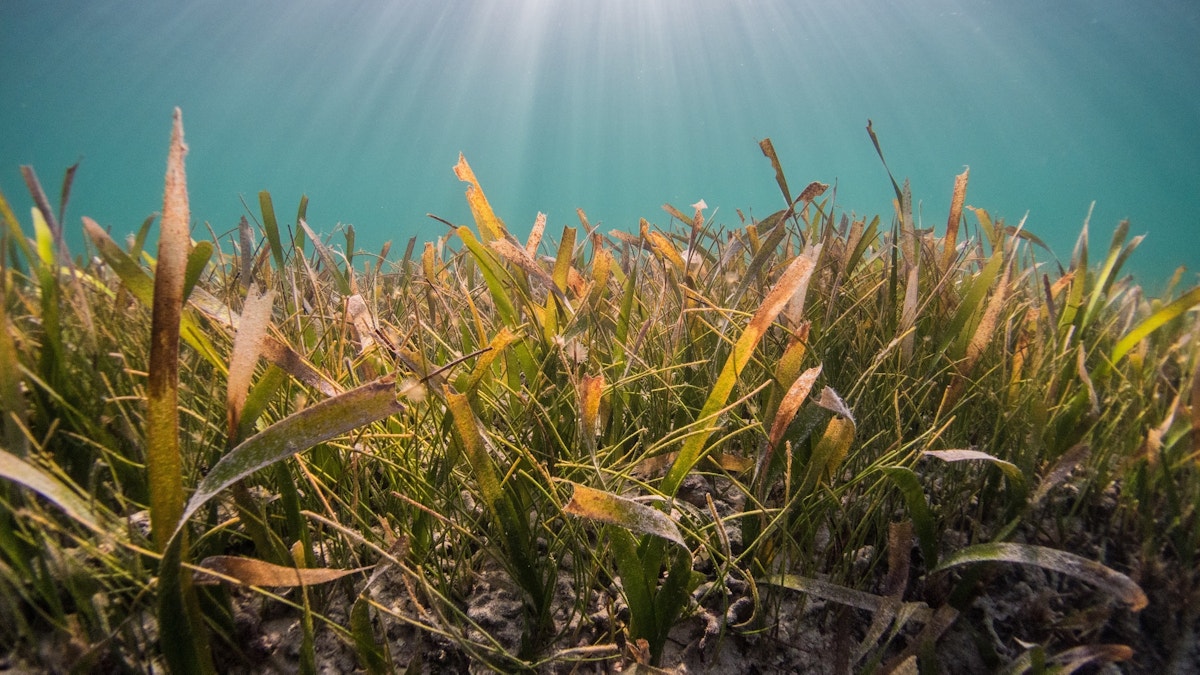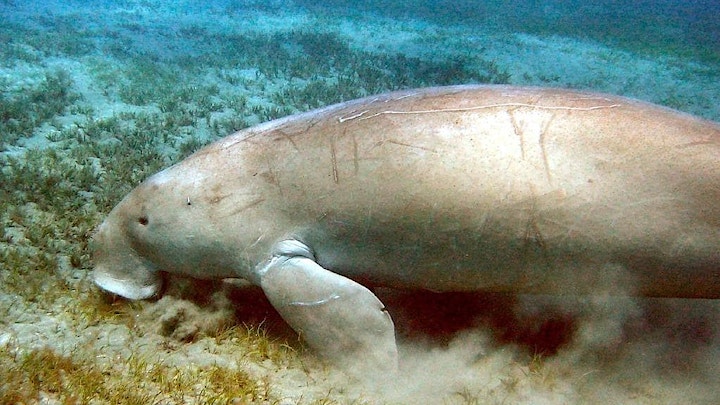
Dr Dazza | Seagrass in Moreton Bay
Published 2:00pm 5 April 2023

 Words by Kylie Knight
Words by Kylie Knight
Ever wondered what seagrass does and why it is important? Our expert Dr ‘Dazza’ Daryl McPhee explains …
Seagrasses are flowering plants that are not a true grass, but rather more closely related to lillies and ginger. Seagrass beds are a part of a mosaic of inshore habitats along with mangroves, saltmarsh and intertidal sand flats that are important for coastal biodiversity.
They are important habitats for juvenile species of fisheries significance as they provide food and shelter and fulfil several other significant ecological roles. Seagrass beds stabilise the seabed through the trapping and binding of sediments.
Organic matter from seagrass meadows is important at the base of food webs for fish inhabiting adjacent unvegetated mudflats. While few animals consume seagrass directly, it is consumed by dugong and green turtles.
Seagrass beds worldwide are in an indicator of coastal health and water quality. While naturally dynamic, seagrass beds are in overall decline globally.
Multiple stressors are invariably behind seagrass declines: these include eutrophication because of excess nutrients which can lead to algal blooms, increased sediment loads, increased turbidity, extreme weather events, trace metals and herbicides that can interfere with photosynthesis, and reclamation through coastal development.
Moreton Bay supports approximately 179 km2 of seagrass beds. It is considered that, overall, Moreton Bay has lost an estimated 20 per cent of seagrass habitat since European arrival due to cumulative impacts.
Most of the seagrass loss has occurred at the mouth of the Logan River, Deception Bay and Bramble Bay. Based on anticipated sea level rise, a further 17 per cent of seagrass is projected to be lost by 2100 if management intervention (ie. improvements in water clarity) is not implemented in Moreton Bay.

Seagrass in Moreton Bay
There are six main species of seagrass in Moreton Bay and overall, in terms of percent cover, the simple blade like “eelgrass” Zostera muelleri is the dominant species in most seagrass locations in Moreton Bay. The aptly named “dugong grass” Halophila ovalis is a fast-growing species with small round leaves that is one of the preferred seagrass species for dugong.
Seagrasses on the eastern side of Moreton Bay have a greater depth range than those on the western side. The narrower depth range of seagrass on the western side of Moreton Bay was related to water quality, which affected light attenuation.
There are several species of fisheries significance that directly rely on seagrass beds. Foremost among them are tiger prawns. Juveniles tiger prawns occur in seagrass beds and their brown striped colouration makes them camouflaged within the seagrass habitat.
Tiny diver whiting first utilise bare sandy areas as habitat before they move into seagrass beds where they spend time before moving into deeper water. Blue swimmer crabs and even mud crabs may use seagrass beds as juveniles.
Without seagrass, Moreton Bay would not have the biodiversity and variety of productive fisheries that we all enjoy!
Related Stories
Top Stories

Vote for Moreton Bay Art Prize people’s choice award
There’s still time to vote for your favourite piece in this year’s Moreton Bay Art Prize exhibition.


Popular Stories

'Priority' given for Waraba plans
Waraba, formerly known as Caboolture West, will be the 36th Priority Development Area in Queensland, unlocking land for 30,000 new homes and an estimated 70,000 new residents.

Trai Fuller: ‘It’s always felt like home’
Praised by Wayne Bennett for his courageous style of play and loved by long-time Dolphins fans, Trai Fuller has locked in a two-year deal with the club he calls home. He tells us why it means so much to him

4 Ingredients author to share her favourite recipes
Best-selling author behind the hugely successful 4 Ingredients cookbooks, Kim McCosker, will share three of her favourite recipes when she takes to the stage at this year’s Moreton Bay Food + Wine Festival. Find out what she plans to make here













